Waterambassadeur en watermanagementstudent Esmee Mulder onderzocht de functie en bouw van zanddammen in rivierbeddingen in de Kitui regio in Kenia. Dankzij deze dammen worden de grondwaterreservoirs tijdens overvloedige waterafvoer tijdens de regentijd aangevuld. Op deze wijze is er jaarrond meer water beschikbaar voor de bevolking, voor dieren en voor planten. Hierdoor kan onder andere meer voedsel worden verbouwd. Dankzij de directe rol van de lokale bevolking in de bouw en het beheer draagt het systeem van zanddammen, aangevuld met andere wateropvangtechnieken, belangrijk bij aan het tegengaan van de gevolgen van de schaarse regenval. Lees de Engelstalige blog.
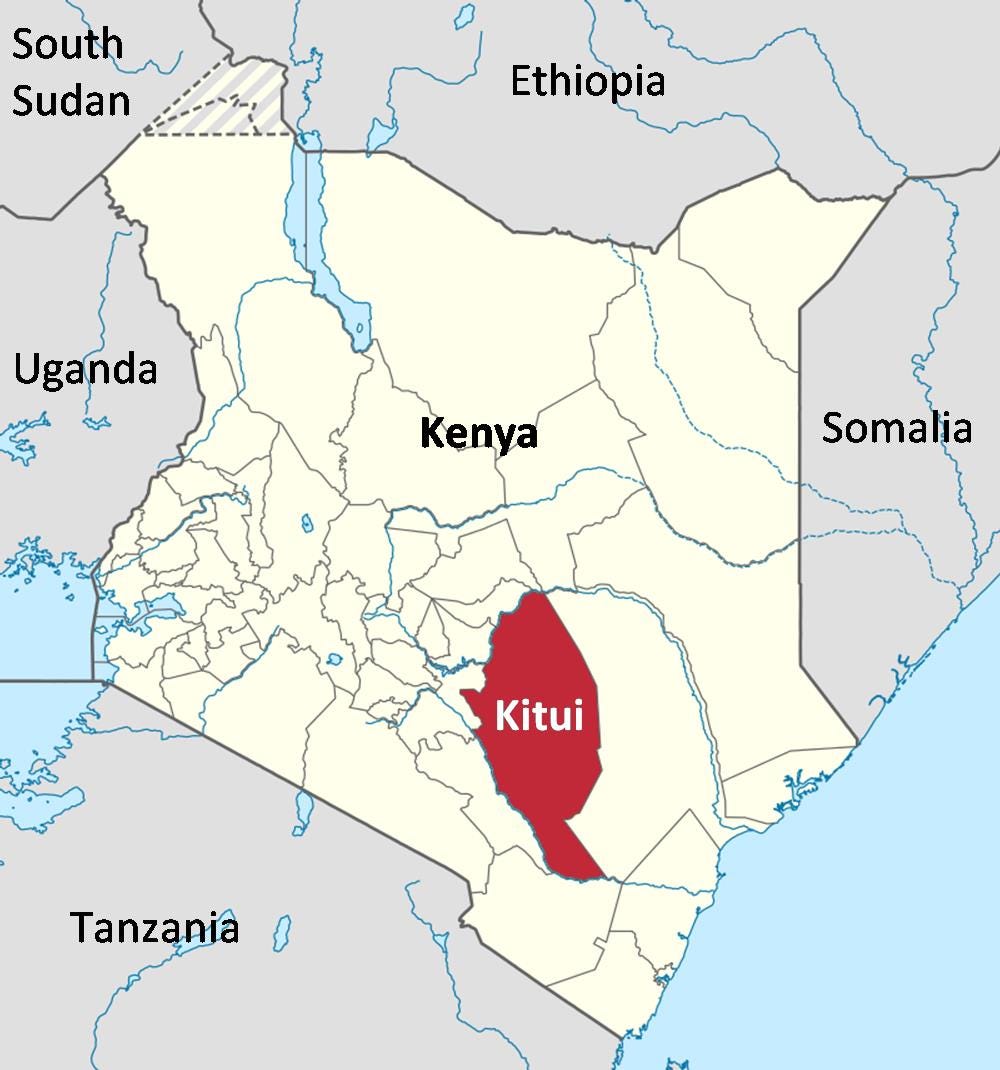
Kitui county (Kenya) has been struggling with an increasingly dry climate and a growing population. The livelihood of the Kamba people (the main tribe in the county) depends on both pastoralism and agriculture. Sand dams can make a difference in the supply of water for people, livestock and crops.
Most of the crops are rainfed. Additionally, people use plots to cultivate grass for their livestock, which is used in dry season. Besides water for household consumption, additional water is needed for livestock and the cultivation of crops. The traditional way of accessing this water is by scooping sand from the ephemeral riverbeds. However, this source is not available all year round, which leads to long walks towards other water points. As there is not enough water for agriculture, families turn to charcoal production, which increases deforestation. Since trees contribute to conserving the groundwater reservoir, deforestation decreases the water abundance in the region. The water shortage problems in these communities has attracted the attention of water management initiatives. One of the most successful techniques which is applied in many parts of the region is the creation of sand dams.
Dams create groundwater reservoirs
Since 1995 SASOL (Sahelian Solutions) Foundation has been working together with the local community in constructing sand dams. These dams are built in the ephemeral river beds to create a groundwater reservoir which will last till the next rain season. The dams are built directly on the impermeable bedrock of the river to prevent water from seeping underneath the construction. The dam contains a large spillway to ensure the continuation of the river water flow towards the downstream areas. Water only flows in flash floods over the ephemeral river bed which can last for a few hours to a few days, depending on the size of the river. As the flood passes, the sediments accumulate behind the dam wall, giving the water time to infiltrate into the sand.
The idea of a sand dam is to enlarge this sand reservoir in order to store more water. Additionally, the dam prevents the infiltrated water from flowing away. As the water is infiltrated, the sand can filter it, protects it from evaporation, and prevents mosquitoes from breeding in it. This technique provides relatively clean water to the surrounding communities all year round. Once the sand dam is placed, the communities can continue using their traditional practise of sand scooping to access water. Commonly in addition to the sand dams, wells are built to ensure larger water access points which are protected against contamination and mosquitos.
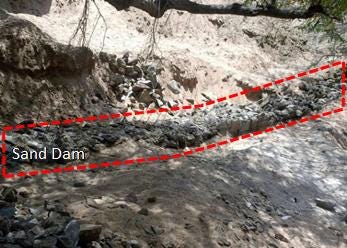
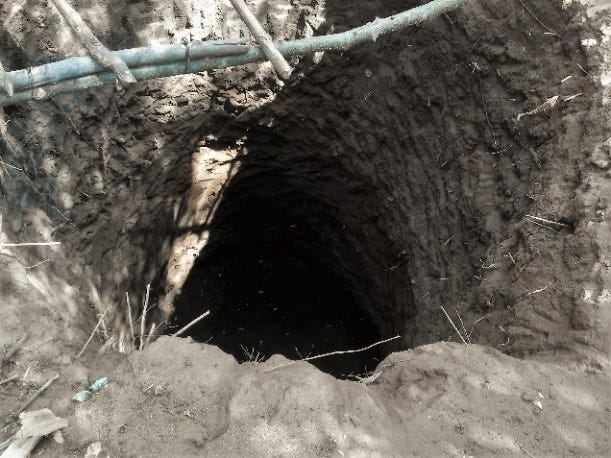
Community engagement
Since 1995 SASOL, the project communities, and donors have contributed to building nearly 800 sand dams. Most of the dams have been constructed in Kitui county, but the technology has also been applied in Kajiado county (Kenya), Burkina Faso, Ethiopia, and Longido (Tanzania). The large amount of sand dams has led to a rise in the water table in several areas making the environment more attractive for vegetation growth and agriculture. The crucial aspect of the SASOL projects, which is one of the reasons for its great success, is the community engagement. Communities carry a large part of the responsibility and are involved from the starting point of the project.
Ownership in villages
First, the community has to apply in order to be considered for a sand dam project. Then, the members of the villages write a proposal, which includes a water use assessment and an assessment of the most suitable location for the dam. A water committee is elected by the community to sustain the management of the source. The members provide local building materials and physical labour for the dam construction. The further material and technical knowledge is provided by SASOL. Additionally, the community receives training on the different types of water harvesting technologies and the sand dam technology. When learning how a sand dam is constructed and how it operates the members also learn how to maintain and repair the dam (and wells if present).
In the past, many projects in community development have failed due to a lack of community engagement, dictation on the side of the donor or implementing organization, and funding difficulties. The aim of the sand dam projects is to prevent these failures. As the community is involved from the very beginning of the project, contributes to the costs and labour and is fully responsible for the management and maintenance afterwards, a feeling of ownership is created. The full community ownership of the dam has led to many successful sand dam projects in the region.
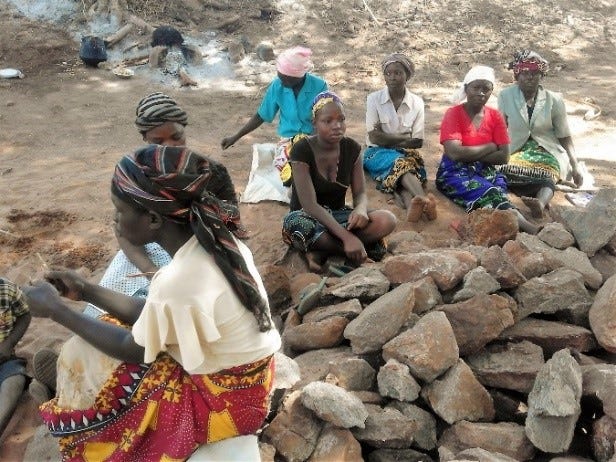
The WASH Alliance member RAIN has funded a sand dam project in Ikutha ward in Kitui South sub-county. Currently the project is still under construction. The community has made a lot of progress on the sand dam and the hand pump-well which has been dug near the dam to extract the water for human use. The other two sand dams a few hundred meters downstream are used for lifestock water use to prevent contamination. There are 10 sand dams along the Wiitu stream, which have provided an increase in the water availability in the area.
Stimulation of techniques to increase water supply
Besides supporting the construction of sand dams, SASOL is trying to stimulate other techniques to increase the water supply in the area. These methods include rain water harvesting from roofs, capturing surface runoff, and installing storage tanks to ensure that the water supply can be used through the dry season and remains protected from contamination. The Kiangu Secondary School, located 3 km from the sand dam project, has been funded by RAIN to construct a water storage tank. During my visit, the school was in the third week of the construction of the tank with two more weeks to go (see picture). The tank will have the capacity to store 80,000L of water which will be filled using rainwater harvesting from the roofs of the school and using the water supply service. This is a service from a private company that will fill the tank with water using a truck and a pump. Currently the school uses donkeys daily to fetch the water from a borehole which is 10km away. It takes several hours to fetch the water, which results in a lack of water for the students during some parts of the day. Thus, the new tank will provide a more stable source and ensures clean water during any time of day.
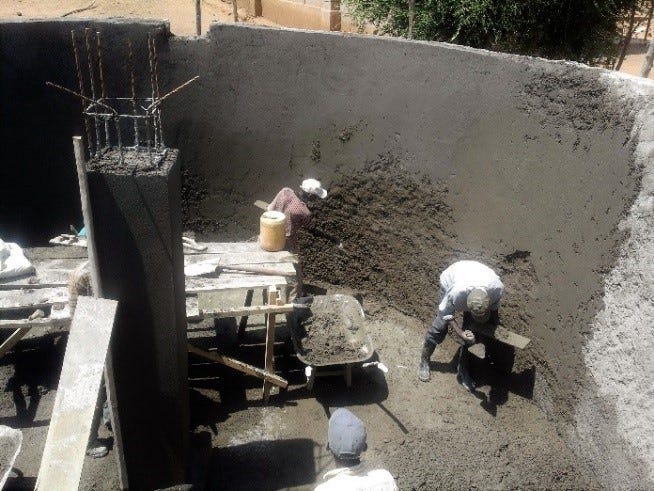
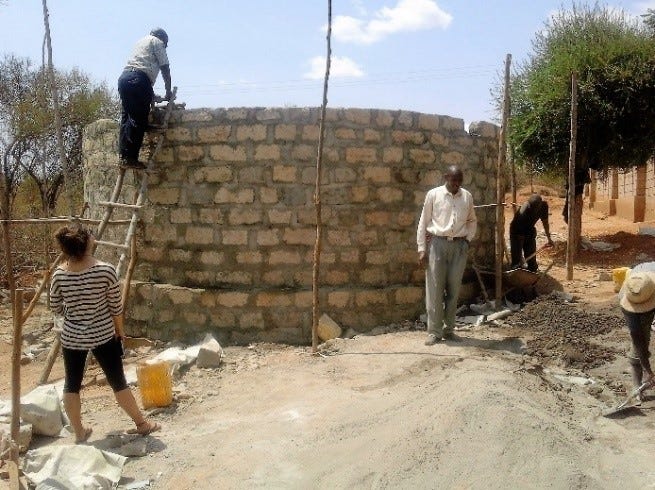
Water is taken for granted by many people in the world. Areas like the Kitui county emphasize the importance of this resource. Sand dams can create hope for these communities and can improve their food security. By combining sand dam construction with other water harvesting initiatives such as rainwater harvesting, surface water harvesting, and the construction of large storage tanks, a region like the drylands of Kitui county can increase their resilience to limited rainfall.
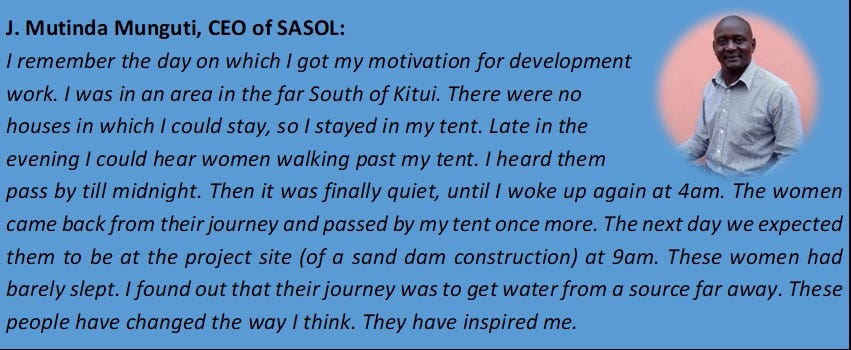
Sand dams are key in water supply drylands Kenya was originally published in Water, wereldwerk! on Medium, where people are continuing the conversation by highlighting and responding to this story.
